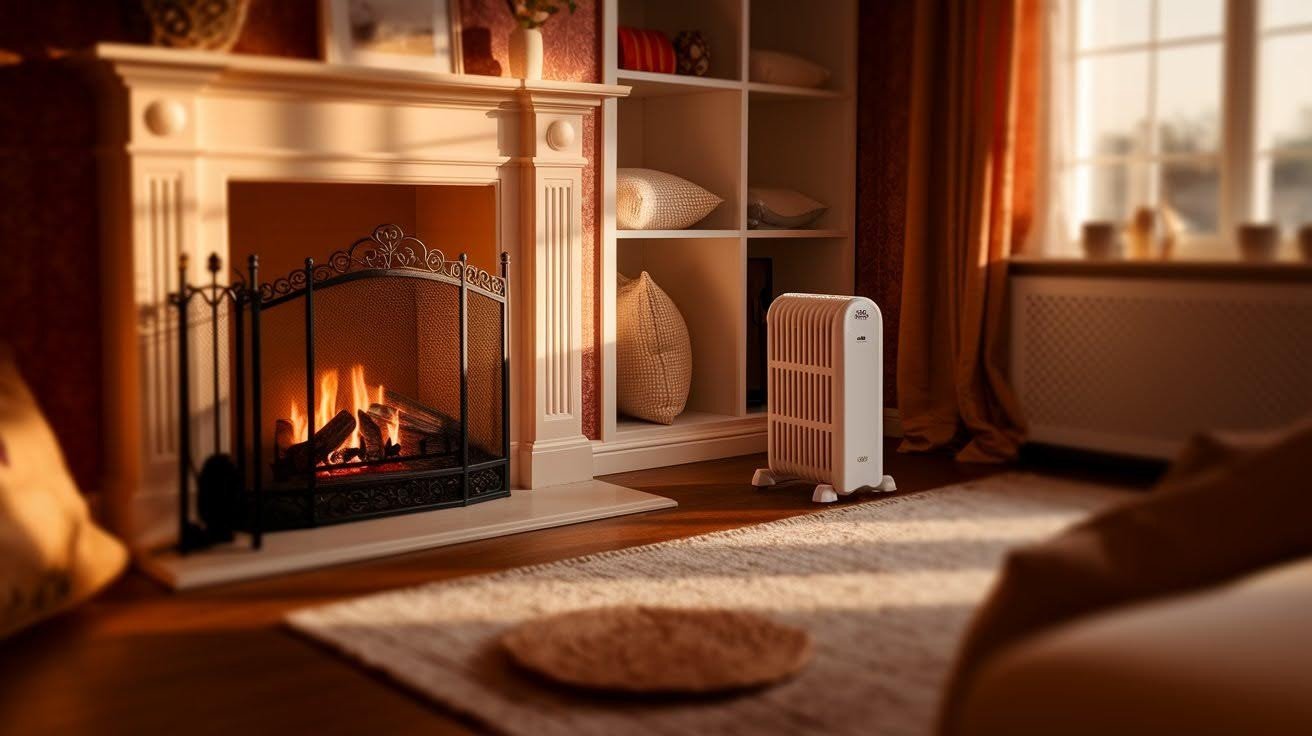Every year, fires burn down 7 million acres across the United States. Millions of homes face this danger right now. Here’s the good news: every dollar spent on fire prevention saves six dollars in damage costs.
As a certified fire safety expert with 15 years helping families protect their homes, I’ve seen these five proven strategies save lives. Install working smoke alarms everywhere. Cook safely in your kitchen. Keep electrical systems in good shape. Control heat sources carefully. Follow safe smoking rules.
These steps work better than fighting fires after they start. Small changes make your home much safer.
Core Fire Prevention Strategies
Fire prevention works best when you focus on the most common causes. Most house fires start in predictable places and happen for similar reasons.
Smoke Alarm Systems: Your First Line of Defense

Put smoke alarms on every floor of your home. Place them outside all bedrooms, too. Test each alarm once a month by pressing the test button. Change batteries every year, even if they still work.
Teach everyone in your family what the alarm sounds like. Make sure they know what to do when it goes off. Add carbon monoxide detectors for complete protection from both fire and poisonous gas.
Kitchen Safety: Where Most Home Fires Start

Stay in the kitchen when you cook. Never leave food cooking while you do other things. Keep your cooking area clean and free of clutter that can catch fire.
Keep a three-foot clear space around your stove and oven. If grease catches fire, cover the pan with a lid and turn off the heat. Let it cool down completely before moving it.
Electrical Safety: Preventing Hidden Dangers

Check all electrical cords and outlets regularly. Look for frayed wires, loose connections, or burn marks. Fix problems right away or call an electrician.
Don’t plug too many things into one outlet. Use only certified electrical devices that have safety labels. Replace old extension cords that look worn or damaged.
Heat Source Control: Managing Fire Risks

Keep space heaters and fireplaces in good working order. Have heating systems checked by professionals once a year. Store flammable materials like gas, paint, and paper away from heat sources.
Use flashlights instead of candles when the power goes out. Candles cause thousands of house fires every year. Battery-powered lights are much safer.
Smoking Safety: Eliminating a Leading Cause

Smoke outside only, never inside your home. Always put out cigarettes completely in ashtrays with water or sand. Never smoke in bed or when you feel sleepy.
Be extra careful if anyone in your home uses oxygen for medical reasons. Oxygen makes fires burn much faster and hotter than normal.
Home Structure and Maintenance
Your home’s structure plays a big role in fire safety. Regular maintenance keeps small problems from becoming big dangers.
Fire-Resistant Home Features
Choose roofing and siding materials that don’t burn easily when you make upgrades. If you can’t upgrade right now, apply fire-retardant coatings to existing materials. These coatings slow down fire spread.
Install screens on vents and openings to keep embers out. Create a clear space around your home by removing dead plants and flammable materials within 30 feet.
Regular Maintenance for Fire Safety
Clean gutters and remove leaves from your roof each season. Dead plants and debris catch fire easily and spread flames to your home. Remove flammable items from decks and porches, too.
Fix damaged parts of your home quickly. Seal gaps and cracks where embers might get inside. Small repairs prevent big problems during fire season.
Emergency Preparedness and Planning
Good planning saves lives when fires do start. Every family needs clear plans and regular practice.
Family Escape Planning
Draw a map showing two ways out of every room in your home. Pick a meeting spot outside where everyone will gather. Practice your escape plan twice each year so everyone remembers what to do.
Keep emergency supply kits ready with flashlights, batteries, first aid items, and important papers. Store copies of important documents in fireproof containers.
Communication and Information Systems
Make a list of emergency phone numbers for every family member. Include local fire departments and emergency services. Keep battery-powered radios for getting news during emergencies.
Learn how to shut off gas, water, and electricity to your home. Know where these controls are located and how to operate them safely.
Conclusion
Fire prevention needs attention in many areas of your home. Kitchen safety, smoke alarms, electrical systems, heat sources, and smoking rules all matter. Regular maintenance and good planning protect your family and property.
Based on my experience training thousands of families, small tasks make the biggest difference. Monthly alarm tests, yearly heating system checks, and seasonal cleaning prevent most home fires. Early detection systems give you time to escape safely.
Start using these strategies today. Begin with smoke alarms and kitchen safety, since these prevent 60% of home fires. Make fire prevention part of your routine.
Frequently Asked Questions
How Often Should I Replace My Smoke Alarm Batteries?
Replace batteries yearly when daylight saving time changes. Chirping sounds mean immediate replacement is needed. Newer 10-year lithium batteries cost more initially but provide better long-term value and reliability.
What Should I Do If My Clothes Catch Fire?
Stop immediately, drop to the ground, cover your face, and roll to smother flames. Never run, as this feeds oxygen to the fire. Seek medical attention immediately for any burns.
Can I Use Water on All Types of Home Fires?
No. Water spreads grease fires and causes electrical shock risks. Use baking soda or lids for grease fires. Turn off electrical power first, then use water safely.
How Far Should Furniture Be From Space Heaters?
Maintain a minimum three-foot clearance from all combustible materials. Check manufacturer specifications for exact distances. Schedule annual professional maintenance for gas units to ensure safe operation.
What Items Should Be in a Home Fire Emergency Kit?
Include flashlights, batteries, first aid supplies, important document copies, three days of water and food per person, medications, and cash. Store in easily accessible locations near exits.






